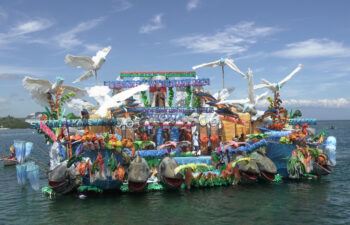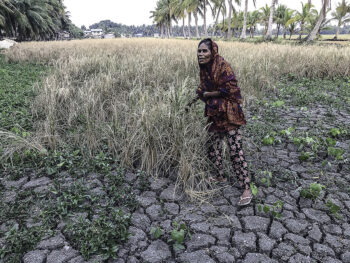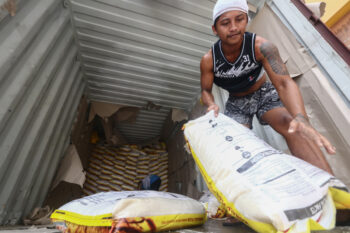Review: KADAYAWAN ART EXHIBIT 2022
Bintana Art Gallery
2nd floor, Abreeza Mall, J.P. Laurel St., Davao City
July 30 – August 12, 2022
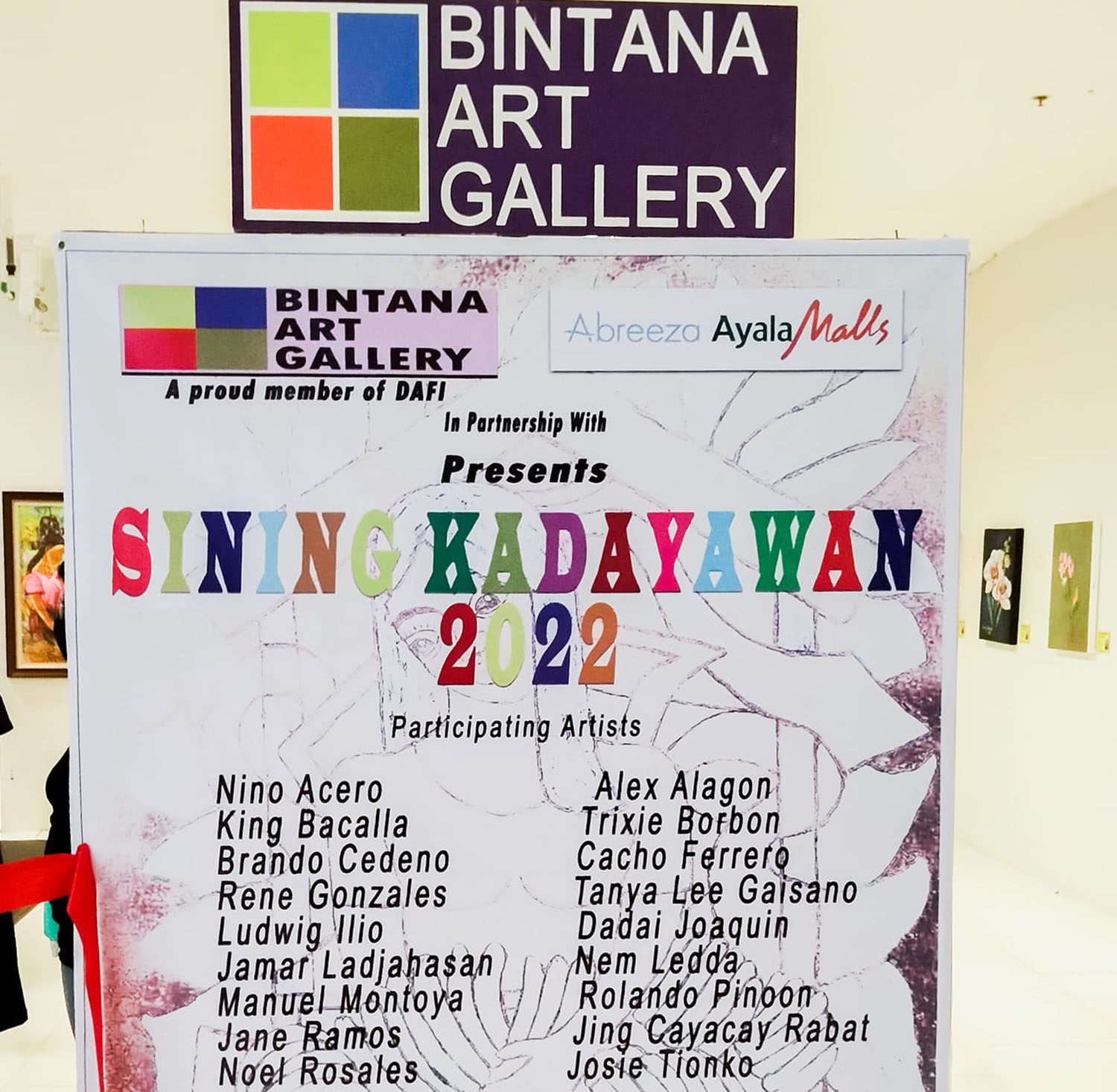
DAVAO CITY (MindaNews / 03 Aug) – It is Kadayawan season again in a city whose mantra is “Life is Here!” And if Kadayawan is about to unfold, what could be more predictable than the eruption of the city’s iconic symbols appearing in everything from tarpaulins lining the streets to images in an art exhibit!
And Kadayawan Art Exhibit 2022 is no exception. Now ongoing at the 2nd floor of Abreeza Mall along J. P. Laurel St., this collection of 31 paintings and eight small sculptural pieces organized by the Bintana Art Gallery opened to the public last July 30 and will continue to be on view until August 12. There are 18 artists represented in this collection.
One of the active group of visual artists in the city, the Bintana collective has contributed to making the visual arts the most actively engaged among the various cultural art groups. On its own or in conjunction with other visual arts groups in the region, the Bintana collective has regularly mounted exhibits even during the pandemic period.
The advantage of doing a show such as Kadayawan Art Exhibit 2022 is that Bintana makes sure it is accessible to the public. Exhibited in a very public space at the mall certainly draws an audience, many of whom are unaware that such an exhibit has been mounted. Another advantage is that a small collection is sometimes better viewed than a full-blown one with hundreds of paintings and art works. The viewer can just leisurely go through the collection without feeling overwhelmed and even tired after standing for hours.
As can be expected – this exhibit being part of the city’s yearly Kadayawan festivities – the images on the paintings are those of the city’s iconic symbols namely Mt. Apo, the Philippine eagle, orchids, tropical fruits and the indigenous peoples. These images appear in the 31 paintings and most of the sculptural pieces are those of the eagle’s head. One element that connects the exhibit is that all paintings are in same size (24” X 18”). Most of the medium used is acrylic, although there are a few in oil, watercolor and mixed media.
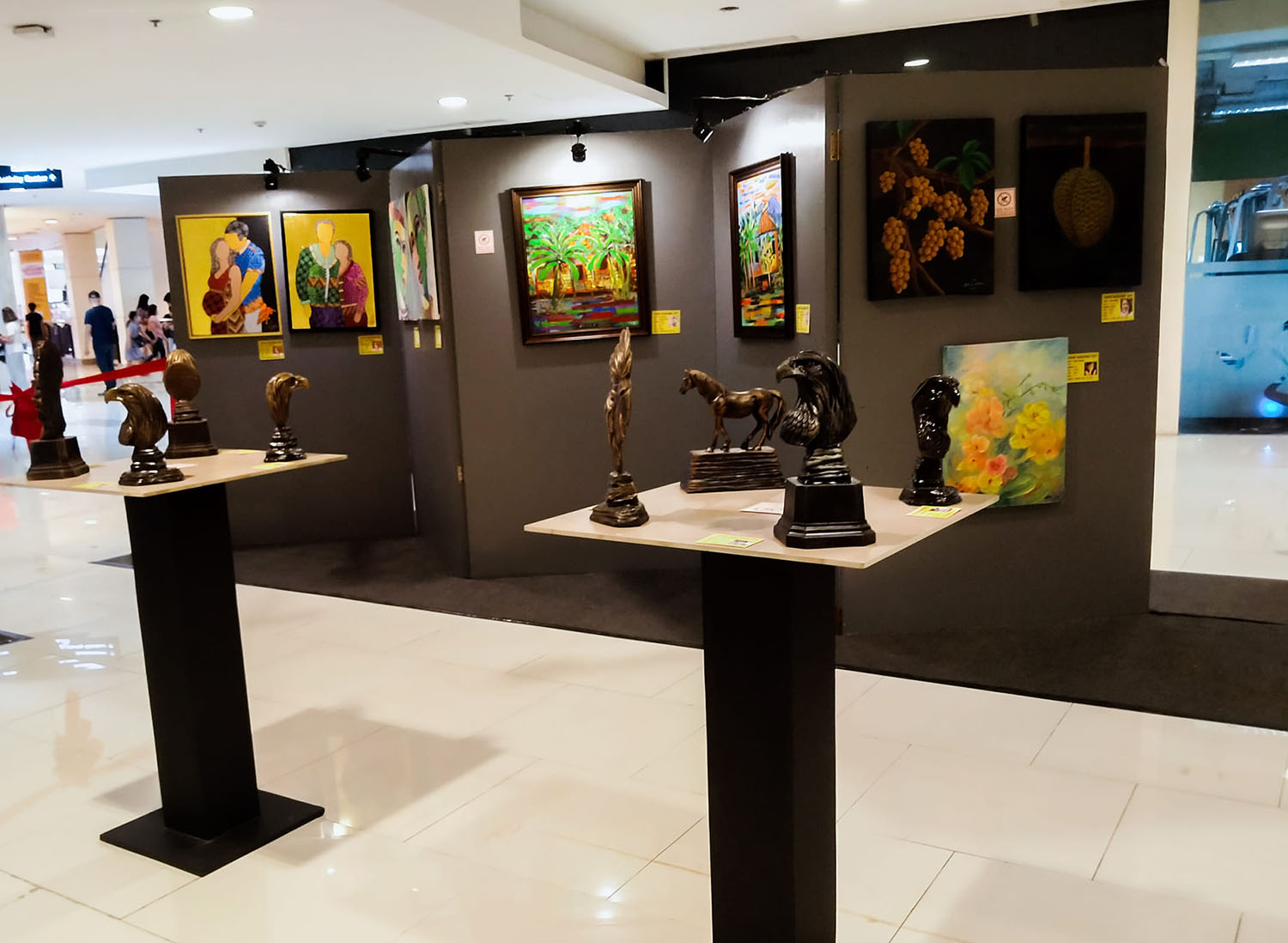
The most impressive are the portraits of indigenous peoples painted by Rene Gonzales (oil, Bagobo Datu), one that shows the wrinkles of an aging, wise-looking datu. It is so realistic one thinks it is a photo if viewed from a distance. His Bagong Pag-asa (oil), a portrait of a lady with a playful smile on her face wearing an eagle mask, is also a stand-out.
Also quite arresting are the other portraitures which are also of the faces of indigenous people, but rendered in various styles and media. Cacho Ferrero paints faces (watercolor, Dignidad No. 1 and No. 2) following the social realist style. The eyes of an indigenous man and woman looks directly at the viewer as if to try to gaze into the viewer’s conscience. On the other hand, Ludwig Ilio (acrylic, Lumad No. 03 and 04) renders his Lumad faces as if they replicate African masks. The use of bright colors juxtaposed together to project a festive feel of these pieces fits well into the Kadayawan motif.
Further exploring the Kadayawan motif, Noel Rosales (mixed media, Kadayawan Uno and Dos) depicts the festival’s explosion of colors in the streets, especially as the indak-indak is on display. His two paintings , rendered along the playful colors, remind the viewer of Matisse. Using mixed media, the two pieces appear as if paper cuttings are collaged together.
Alex Alago (acrylic, Tulogan Series 1 & 2) explores the images beyond the faces or figures of IPs and paints an important element of the Lumad material culture, namely their traditional abode or tulogan. However, instead of following the social realism school, he takes on the path of impressionism but in bolder colors. With the fiery sunsets as backdrops framed by the silhouette of coconut trees, the scenes depicted could easily make the viewer intuit foreboding events. The absence of human figures in these paintings add to the fear that something tragic is bound to take place, e.g. the people being dislocated from their ancestral domain.
A more romanticized depiction of the Lumad’s material culture appears in Josie Tionko’s pieces (oil, Brass Heritage 1 & 2). The Philippine eagle as an iconic symbol of Kadayawan appears in Rolando Pino-on’s piece (acrylic, The King). At the center of the exhibit space are tables on which the sculptural pieces of Brando Cedo are exhibited. Nine of the eight pieces are variations of the eagle in resin, while there is one of a horse. Mt. Apo is the one iconic symbol that is missing. The only landscape painting in this collection is Nem Ledda’s piece (acrylic, Lantaw Dabaw), a depiction of the city as viewed from the beachfront of Samal Island. Owing to the thick clouds hovering over the city, Mt. Apo hardly appears in the painting.
The rest of the exhibit are images of flowers, especially orchids. Six of the participating artists painted orchids in various styles, forms and media. Nano Acerto (oil, untitled) painted birds hiding behind orchids. Lanar Ladjahas (oil, Souls No. 1 & 2) painted the orchids with somber backdrops. Dadai Joaquin’s painting (oil, untitled) follow the soft pastel color combination which makes the painting looks like it is done in watercolor. Others include Trixie Bordon (acrylic, untititled) , King Bacalla (acrylic, untitled) and Jing Rabat (acrylic, Orchid Series 1 & 2).
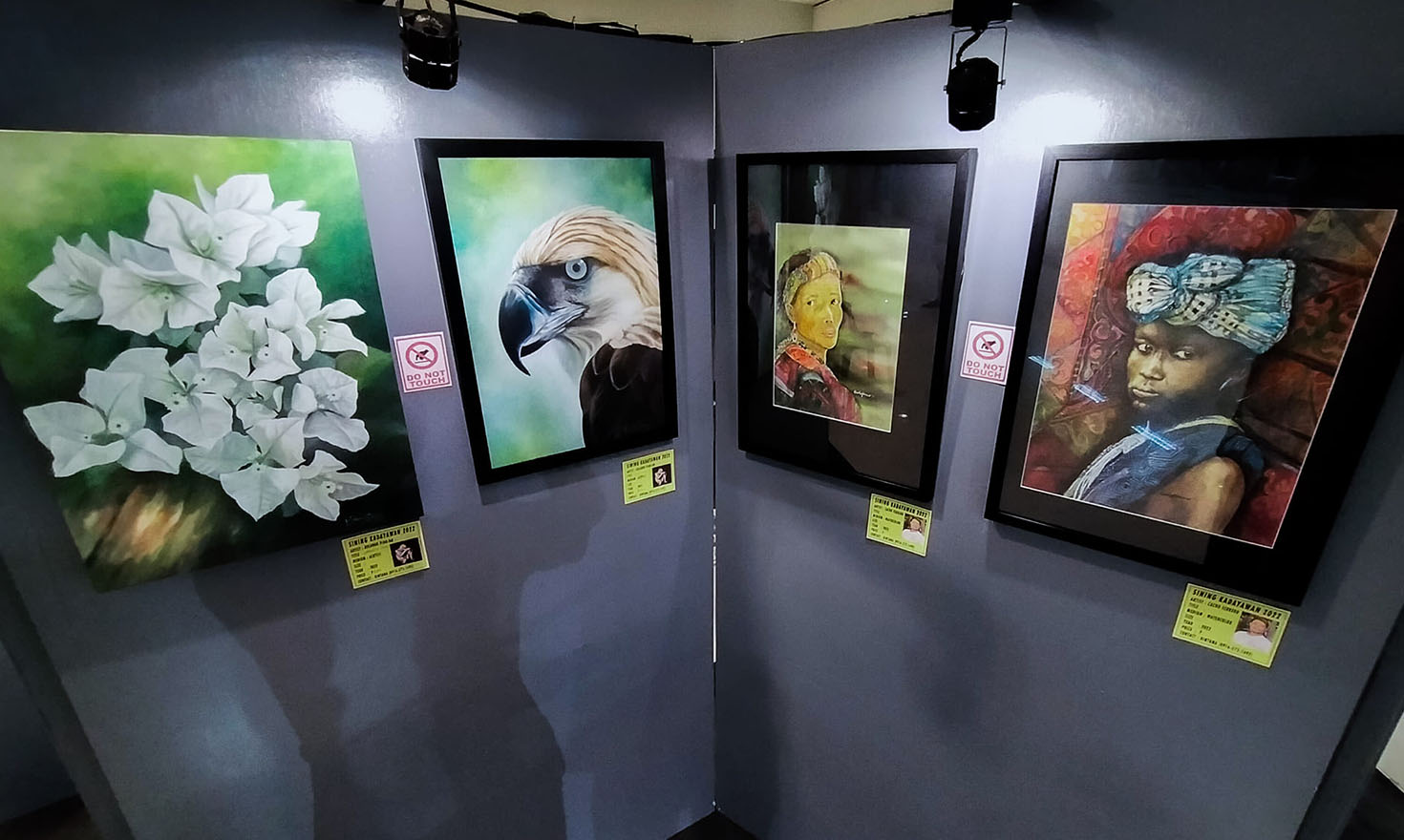
Only one painting veers away from the orchids symbol. Rolando Pino-on (acrylic, Morning Light) instead painted the white bougainvillea . Two painters dealt with the tropical fruits. Jane Ramos (acrylic, untitled) shows a durian in one piece and lanzones in the second entry. The only painting that has a much bigger size than the rest is Manuel Montyo’s piece (acrylic, Tres Marias), depicting three women gathered together in a fruit store, selling mangosteen, pomelo and durian. It is in a style that had been a popular one among the Mabini artists following the success of Anita Magsaysay Ho’s women vendor paintings.
As part of Bintana’s advocacy to prepare and train the next generation of artists, Alex Alago and his collaborators have been holding art workshops for children. To encourage the kids, their works are also exhibited in an adjunct place in the same venue. Entitled Munting Sining, it shows the attempts of 12 children to try their hand at painting images. As expected most of the images are those of animals. There are also landscapes and ballet dancers.
With the pandemic held at bay for the moment and the “normal times” seemed to have returned, this year’s Kadayawan promises to bring back the festival’s glory that got suspended at the height of COVID-19’s infections. City Hall is presently busy organizing various events. The Kadayawan Cultural Village is soon to open at Magsaysay Park. Hotels, restaurants and malls are now getting ready to welcome guests from all over the region. Soon announcements will be made regarding all the usual concerts, street dancing and contests usually scheduled during the week.
But for now, we can leisurely check out the visual exhibits available to the viewer and be amazed at the kaleidoscope of Kadayawan iconic images!
[MindaViews is the opinion section of MindaNews. Redemptorist Brother Karl Gaspar is a professor at St. Alphonsus Theological and Mission Institute (SATMI) in Davao City and until recently, a professor of Anthropology at the Ateneo de Davao University. Gaspar is author of several books, including “Manobo Dreams in Arakan: A People’s Struggle to Keep Their Homeland,” which won the National Book Award for social science category in 2012, “Desperately Seeking God’s Saving Action: Yolanda Survivors’ Hope Beyond Heartbreaking Lamentations,” and his latest, “Handumanan (Remembrance): Digging for the Indigenous Wellspring.”. He writes two columns for MindaNews, one in English (A Sojourner’s Views) and the other in Binisaya (Panaw-Lantaw). Gaspar is a Datu Bago 2018 awardee, the highest honor the Davao City government bestows on its constituents.]

